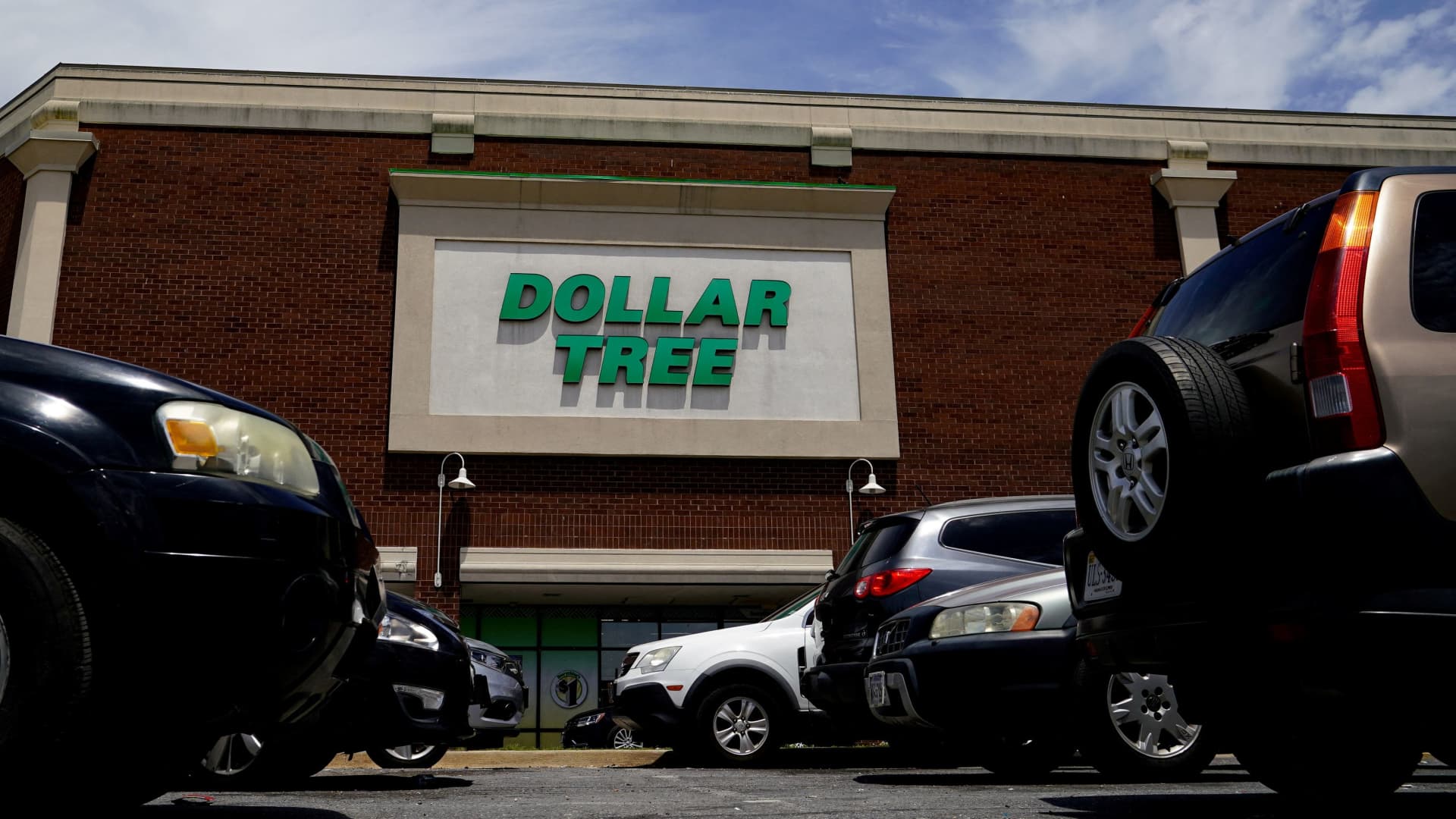
Dollar stores could work as inflation plays for investors as shoppers try to stretch their budgets. Before their recent earnings reports, some traders were concerned that Dollar General and Dollar Tree would underperform, especially now that stimulus payments issued during the pandemic have faded. Those concerns grew after Target’s and Walmart’s dismal reports cast doubt across the group about retailers’ ability to handle rising input costs. Instead, Dollar General and Dollar Tree’s quarterly earnings reassured investors that discounters offer several advantages during periods of high inflation. Not only do these retailers have the pricing power to pass on higher costs to consumers, they’re able to attract new higher-income shoppers who are trying to stretch their dollar and trade down. “This is the most difficult, unusual backdrop for retailers that I’ve ever seen,” said Bradley Thomas, analyst at KeyBanc Capital Markets. “As we try to figure out how investors should best position their portfolios, one thing that we try to keep coming back to is who offers the consumers value, who has growth opportunities, and who has defensive characteristics, all of which really stand out for the dollar stores,” he continued. A focus on value Shares of both Dollar General and Dollar Tree surged last week on the back of their quarterly earnings . Not only did the two retailers beat expectations on earnings, revenues and same-store sales, they also raised their outlooks for the coming year, impressing investors. On Thursday, Dollar General shares surged 13.7%, and Dollar Tree shares jumped 21.9%. For investors, dollar stores can be attractive picks, especially as Wall Street considers recession risks heading into the second half of the year. Part of the appeal is their defensive qualities. Unlike big box retailers that have more discretionary goods taking up square footage in their stores, the discount chains’ focus on groceries and other items that shoppers need on a daily basis, helping to make them relatively impervious to cuts in household spending. Their convenient locations also help boost sales. Dollar stores’ ubiquity and small size put them within reach of many shoppers, with Dollar General reporting that they’re within five miles of three-quarters of all consumers. Dollar General has 18,000 stores. Dollar Tree and its Family Dollar business have more than 16,000 locations. It’s an important advantage for both Dollar General and Dollar Tree as rising oil prices have consumers mindful of their gas tanks — and as both retailers consider expanding their store footprint even further. “Because the stores are so small, you can really pack a bunch of stores into an area,” said Loop Capital Markets analyst Anthony Chukumba. “You don’t need a very large population to support a store so you can put stores really close to each other and have the stores be productive.” The focus on value makes it easier for dollar stores to attract more affluent shoppers. During the most recent earnings call for Dollar General, CEO Todd Vasos said it’s seeing its core customers shopping more “intentionally” and has attracted and retained a higher-end consumer as a result of the pandemic. “So that tells you that that trade-down and trade-in is alive and well and is starting to probably pick up steam as we move through Q2 and into the back part of the year as things continue to tighten up,” Vasos said. Meanwhile, Dollar Tree finished raising its price point to $1.25 in its stores in February, a decision that gives the discounter more flexibility to mix up its assortment of goods. It also has $3 and $5 price points that it’s rolling out in more stores. “The $1.25 price point will open up many levers that they can pull to improve merchandising by giving them a bit more profitability that they can reinvest in the store to improve the shopping experience and hopefully drive more traffic,” said KeyBanc’s Thomas. Some key differences Dollar stores are traditionally regarded as a steady business in good times and bad. Dollar General consistently increased sales annually, reaching $34.2 billion in January 2022, up from $23.5 billion reported in January 2018. Over the same period, Dollar Tree annual sales climbed to $26.3 billion reported in January 2022, up from $22.2 billion in January 2018. “Value has been winning within U.S. retail for a very long time,” said Citi analyst Paul Lejuez. “[S]eemingly no matter what kind of economic environment it is, value tends to perform well. On a relative basis, in periods of financial distress or consumer weakness, I think the relative outperformance is even more pronounced.” Furthermore, they’re expected to have store growth opportunities that could be a tailwind for long-term investment, according to KeyBanc’s Thomas. Still, there are some differences between Dollar General and Dollar Tree. While Dollar General has posted historically consistent results, analysts are looking for a turnaround at Dollar Tree, which has struggled in the past because of underperformance in its Family Dollar business. Last month, Dollar Tree brought in new leadership, including John Flanigan and Larry Gatta, both previously at Dollar General, as head of supply chain and merchandising, respectively, to help turn around Family Dollar. “If they can continue this momentum and come up with a credible turnaround plan for Family Dollar, you know, that story can could become more attractive over time as well,” Oppenheimer analyst Rupesh Parikh said. As Dollar Tree is only several months into its switch to the $1.25 price point, Parikh is also watching for more evidence that consumers will continue to shop at the store despite the more expensive basket of goods. Keeping an eye on Walmart Other concerns remain on the horizon. Discounters have pricing power in part because Walmart, which sets the tone for the industry, is jacking up prices as the big-box company also deals with higher costs. However, signs of slowing sales at Walmart could spur management to slash prices to bring shoppers back into its stores. In 2016, Dollar General was forced to cut prices by as much as 10% on staples such as eggs and milk as Walmart began a price war to win back market share. “Walmart right now is playing nice in the sandbox,” said Citi’s Lejuez. “One of the things that I would, you know, keep an eye on is does Walmart continue to play nice? Or do they, at some point, get more promotional to try to take market share? That wouldn’t be good for anybody that competes with Walmart.” For now, the big-box retailer is reporting strong in-store traffic.







